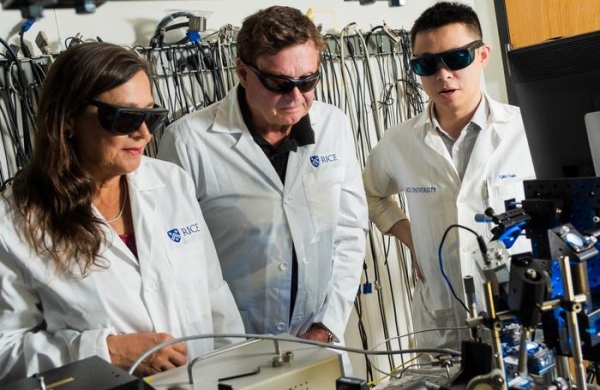Plasmonic photocatalysis breakthrough could enable major industry shift from heat- to light-based processes.
As a clean-burning, potent and versatile energy commodity, hydrogen could play a key role in the transition to a sustainable energy ecosystem. However, the chemical process responsible for more than half of the current global hydrogen production is a substantial source of greenhouse gas emissions.
Rice University researchers have developed a catalyst that could render steam methane reforming (SMR) entirely emissions-free by using light rather than heat to drive the reaction. Moreover, the research could prove instrumental for extending catalyst lifetimes in general, improving efficiencies and reducing costs for a number of industrial processes plagued by coking, a form of carbon buildup that can deactivate catalysts.
The new copper-rhodium photocatalyst sports an antenna-reactor design that, when exposed to a specific wavelength of light, breaks down methane and water vapor without external heating into hydrogen and carbon monoxide ⎯ a valuable chemical industry feedstock that is not a greenhouse gas.
Read more at Rice University
Image: Naomi Halas (from left), Peter Nordlander and Yigao Yuan (Credit: Photo by Jeff Fitlow/Rice University)
Sci/Tech Top Stories
